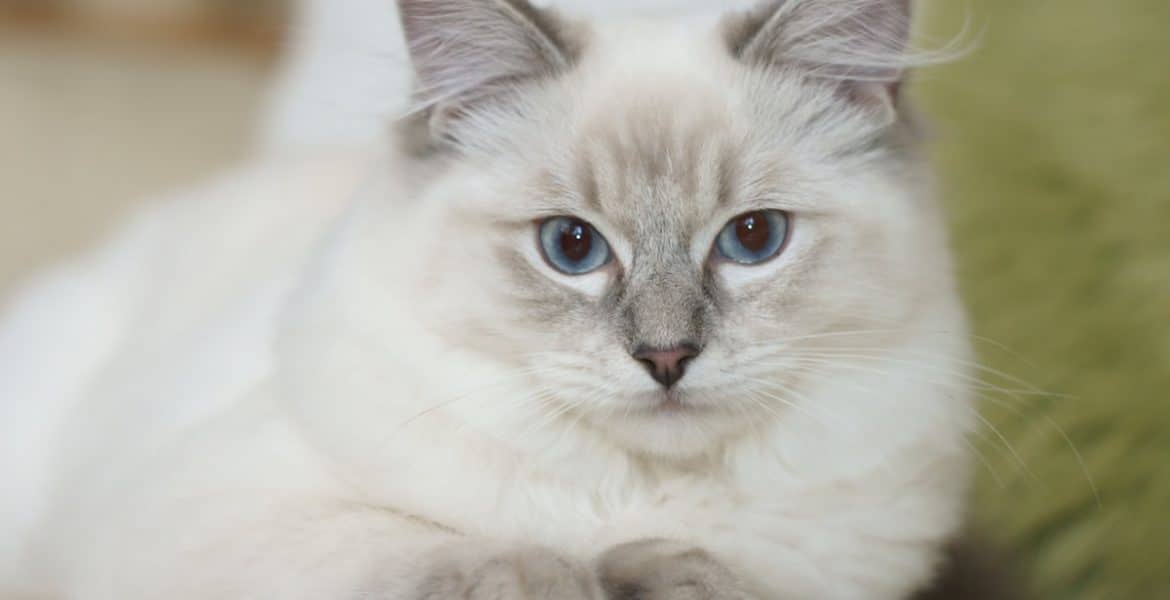It can be extremely hard to know when cats are in pain. Sure, sometimes it’s obvious – you might notice a limp or large cut, but other times your cat’s signs of pain can be far more subtle. Unfortunately when it comes to showing signs of pain or illness, cats are masters of disguise! However there are lots of signs we can look for which indicate when a cat is suffering.
Why do cats hide pain? Well it mainly stems from their origins and their survival instincts in the wild. In the wild, a sick or injured animal is vulnerable to attack, so survival can depend on the animal’s ability to act like everything is fine even when something is wrong. Second, cats don’t show signs of pain in the same way people or other animals do. As they are relatively quiet animals, cats won’t bark, whine, or cry when they’re in pain.

These are 9 signs to look out for if your cat is in pain:
Eye changes
The eyes can be one of the strongest indictors of pain in cats. Often pain on their body will result in larger, more dilated pupils, and slanted eyes that are squinted or partially closed could also be a good pain indicator. There are lots of reasons why a cat will show one or more of these things, so don’t be too quick to diagnose your cat if you don’t notice any other signs. But if you do notice a strange look in their eyes, along with any other odd behaviour, it’s probably best to have them checked out by a vet.
Licking, chewing or loss of fur
Cats will sometimes make a fuss over a particular part of their body that is in pain. Some cats will lick their tummies and cause fur loss, whereas some cats with arthritis in a particular joint may lick or chew at that area more frequently than normal. Although it may be sore, this type of licking rarely causes any damage to the skin, but is an indicator that your cat is in pain.
Hiding
If your cat is in pain, he will often hide from you. You may notice he is spending more time under the bed or behind the sofa. Alternatively he might be quite restless and have a hard time settling in one place. To you it may just seem like odd behaviour but to them, it can be a cry for help. Be sure to check frequently for hiding, as it’s often a very telling sign.
Breathing changes
Cats in pain may have a faster and more shallow breathing pattern than normal. Cats will also often have an increased heart rate if in pain. You can ask your vet to show you how to check and measure your cat’s heart rate correctly.
Aggression
A cat in pain won’t want to be touched and this often leads to aggression. If you stroke your cat and he turns around to bite or scratch you, then something could very well be wrong – the same goes if he hisses you when touched or even if he just starts to twitch his tail in an agitated manner.
Litter problems
Cats who have back pain may struggle to go to the bathroom. This can also lead to constipation. Cats with joint or bone pain may also have difficulty getting into their litter boxes, so they may start going to the toilet outside of their boxes.
A change in posture
A change in your cat’s posture can give you a clue as to where the cause of discomfort is. A cat that holds his head or who’s ears are turned sideways is maybe suffering from ear ache. Likewise a cat that keeps his back curved could be suffering from either back ache or abdominal pain.
Constant purring
Although purring is often seen as a sign of pleasure in cats, it can be misleading, as it’s also a sign of pain and discomfort. The reason why kittens learn to purr to sooth themselves is because their mothers would comfort them this way when first born.
Loss of appetite
One of the most common reasons for loss of appetite in a cat is oral pain but other types of pain can cause your cat to stop eating. Although many cats are picky eaters, if you see a change in their eating habits it might be a tell tale sign that something is wrong.
If your cat starts becoming short tempered, don’t write it off as just a bad mood! Cats are creatures of habit and a change in behaviours can be a warning sign something is wrong. Don’t just wait and see when it comes to your cat’s health. Remember – your cat can only communicate in the best way he knows how!



Its important to keep cats active, otherwise they get frustrated and can lash out. (http://cattree.uk)